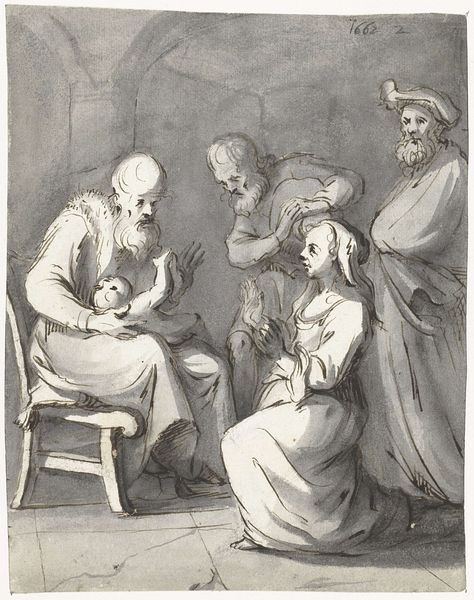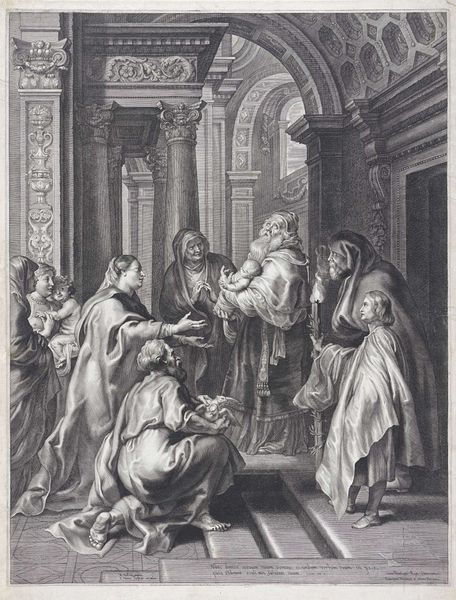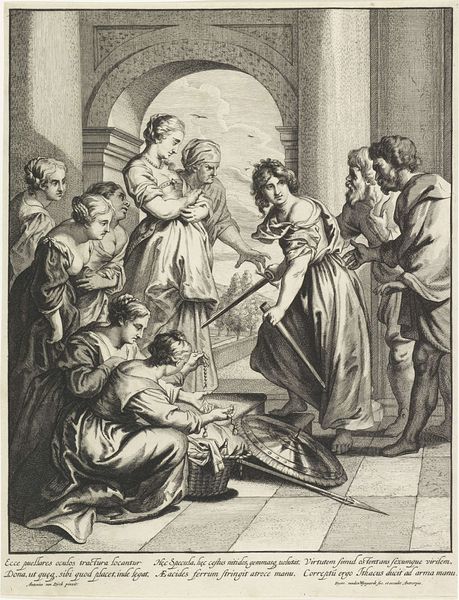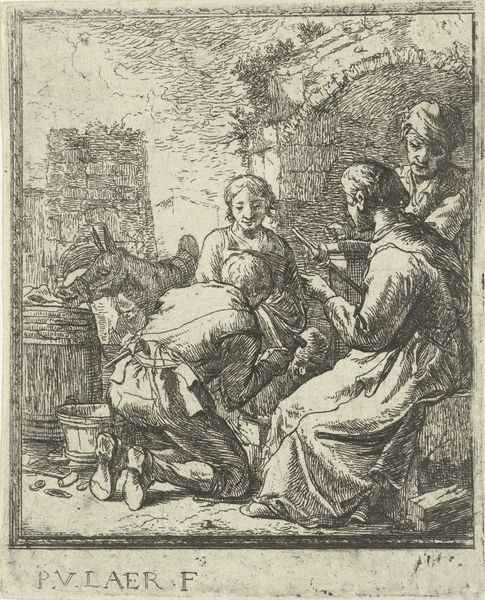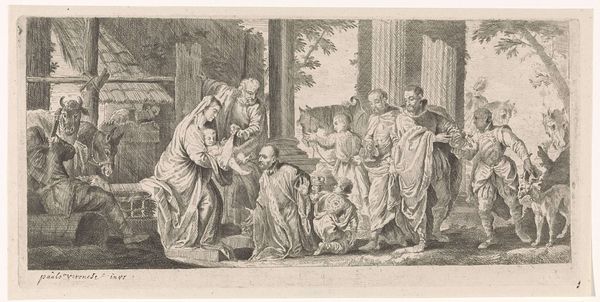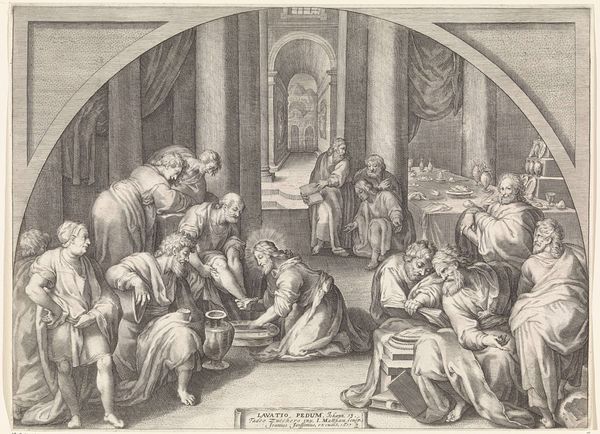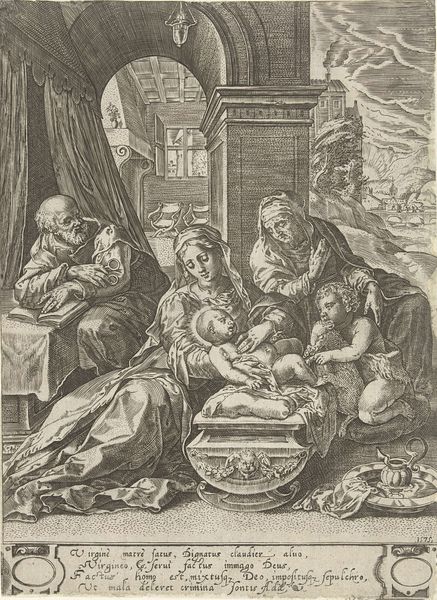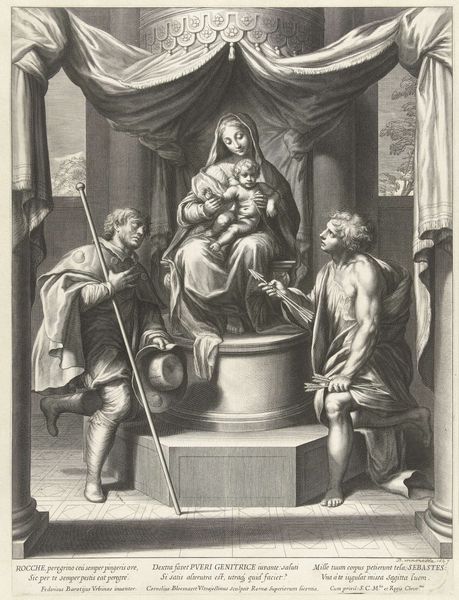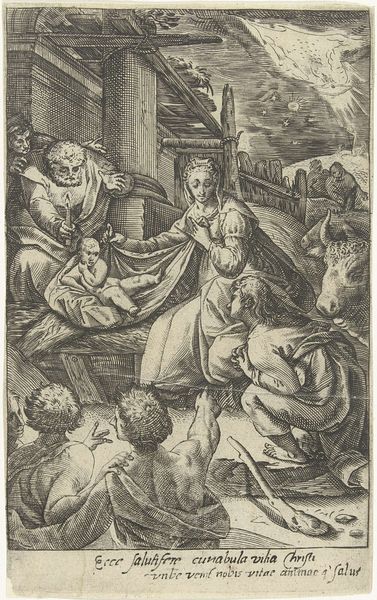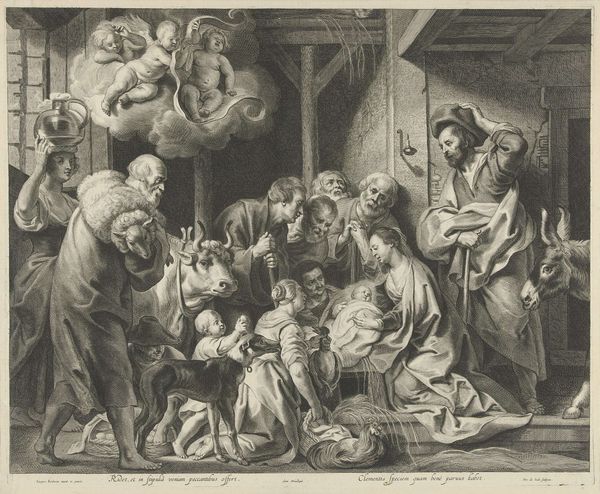
painting
#
portrait
#
baroque
#
dutch-golden-age
#
painting
#
figuration
#
group-portraits
#
genre-painting
Copyright: Public domain
Editor: Here we have Jacob Ochtervelt’s “Itinerant Musicians” from 1665, an oil on canvas. I’m struck by the contrast between the darkness surrounding the musicians and the warm domestic scene in the foreground. What do you see in this piece? Curator: I see a negotiation, or perhaps a subtle power play. Ochtervelt situates these wandering musicians –likely from a lower socioeconomic stratum – within the domestic sphere of a well-to-do family. How does the family react to their presence, and what power dynamics does that reveal? The positioning of the woman and the children versus the shadowed figures of the musicians becomes central to understanding this scene. Editor: Power play...interesting. It's so subtle, but now I see it in the gaze of the woman. It feels very staged though, don’t you think? Curator: Precisely! It’s a meticulously constructed scene, meant to highlight particular societal arrangements. Think about how gender and class are performed here. The musicians, for example, intrude in some ways and yet their interactions are tightly controlled by the lady in the scene. How do you think this work would be received in its historical moment, with its focus on wealth and status? Editor: It seems like a moment captured, but also a carefully constructed commentary. Perhaps it both reinforces and questions social hierarchies at the same time? Curator: Exactly. Dutch Golden Age painting often grapples with these contradictions. The “everyday” is never really that simple, especially when artists use these paintings to negotiate social positions. Editor: I will think about that “everyday” and its complexity now. Thanks. Curator: Me too! Looking closely reveals layers that speak volumes.
Comments
No comments
Be the first to comment and join the conversation on the ultimate creative platform.
